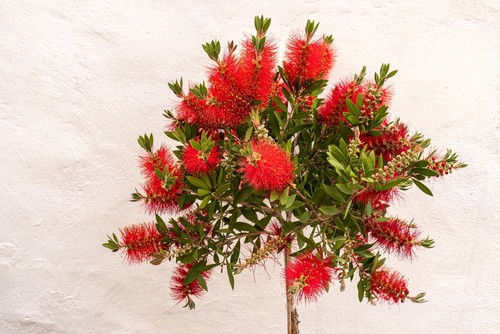Bottlebrush is a beautiful plant that is known for its striking red flowers that resemble a bottle brush. While it is a hardy and low-maintenance plant, it is not immune to problems. One of the most common issues that gardeners face with bottlebrush is yellowing leaves.
Bottle brush leaves turning yellows can be a sign of a range of problems, from nutrient deficiencies to pests and diseases. Understanding the cause of yellowing leaves is crucial to finding the right solution. In this article, we will explore the reasons why bottlebrush leaves turn yellow, and provide tips on how to fix the problem.
Key Takeaways
- Yellowing leaves in bottlebrush can be caused by a range of issues, including nutrient deficiencies, pests, and diseases.
- Proper care and maintenance, including regular watering and fertilization, can help prevent yellowing leaves.
- If yellowing leaves persist, it may be necessary to diagnose and treat underlying issues such as pests or diseases.
You also shouldn’t miss on these other top posts:
Understanding Yellowing Leaves
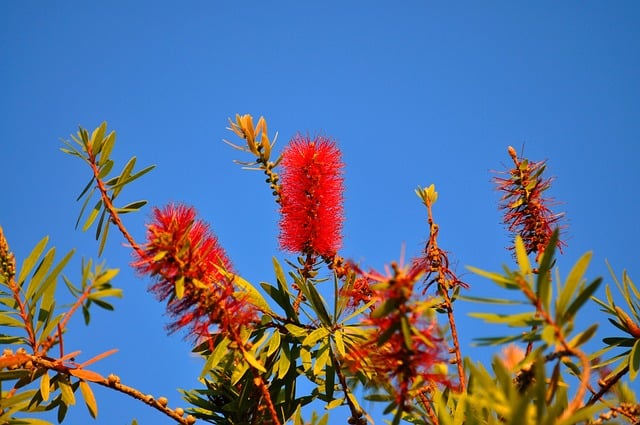
Yellowing leaves on a bottle brush plant can be a cause for concern. It is important to understand the causes of yellowing leaves to take appropriate action.
Bottle Brush Leaves Turning Yellow – 5 Common Problems
1. Chlorosis
One of the most common causes of yellowing leaves is chlorosis. Chlorosis occurs when the plant is unable to produce enough chlorophyll, which gives leaves their green color. As a result, the leaves turn yellow or pale green.
2. Iron Chlorosis
Iron chlorosis is a specific type of chlorosis caused by a lack of iron in the plant. Iron is essential for the production of chlorophyll, so a deficiency can lead to yellowing leaves. Iron chlorosis is common in alkaline soils, where iron is often unavailable to plants.
3. Overwatering
Overwatering can also cause yellowing leaves. When a plant is overwatered, the roots become waterlogged, which can lead to root rot. Root rot can prevent the plant from absorbing nutrients, including iron, which can cause chlorosis and yellowing leaves.
4. Pest Infestations
Pest infestations, such as scale insects, can also cause yellowing leaves. Scale insects feed on the sap of the plant, which can lead to a lack of nutrients and yellowing leaves.
5. Environmental Stress
Environmental stress, such as extreme temperatures or drought, can also cause yellowing leaves. When a plant is stressed, it may not be able to absorb nutrients properly, which can lead to chlorosis and yellowing leaves.
Bottle Brush Care and Maintenance
Bottle brush plants are beautiful and unique, but they require proper care and maintenance to thrive. One common issue that many bottle brush plant owners face is yellowing leaves. Here are some tips for proper bottle brush care and maintenance to prevent yellowing leaves and keep your plant healthy.
1. Watering Techniques

Overwatering is one of the most common causes of yellowing leaves in bottle brush plants. To avoid this, make sure to water your plant properly. The soil should be well-drained, and the pot should have drainage holes to prevent water from accumulating in the bottom.
Water your plant deeply but infrequently, allowing the soil to dry out slightly between waterings.
2. Proper Pot and Soil
The pot and soil you choose for your bottle brush plant are also important for proper care and maintenance. Choose a pot that is the right size for your plant, allowing room for growth but not too much extra space.
The soil should be well-drained and rich in nutrients, but not too heavy or compacted. Adding organic matter to the soil can help improve drainage and provide essential nutrients.
3. Pruning and Growth
Pruning your bottle brush plant can help promote healthy growth and prevent yellowing leaves. Remove any dead or damaged branches, and trim back any overgrown areas to maintain a compact shape. You can also prune your plant to encourage more blooms.
4. Temperature and Location
Bottle brush plants prefer warm temperatures and a sunny spot, but direct sunlight can be too harsh. Place your plant in a location with bright, indirect light and moderate temperatures. Avoid placing it near drafts or in areas with extreme temperature fluctuations.
Seasonal Effects on Bottle Brush
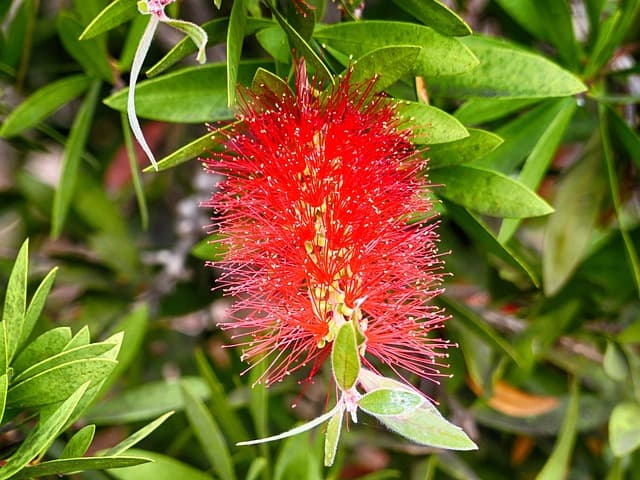
Bottle brush plants are known for their vibrant red flowers and unique foliage. However, sometimes the leaves of the plant can turn yellow, which can be concerning for gardeners. One factor that can contribute to yellowing leaves is seasonal changes. Here are some tips on how to care for your bottle brush plant during different seasons.
Summer Care
During the summer months, bottle brush plants need to be cared for differently than during other seasons. One of the most important things to keep in mind is the amount of water the plant is receiving.
Bottle brush plants prefer well-draining soil, so make sure to water them deeply but infrequently to avoid waterlogged roots. In addition, bottle brush plants thrive in full sun, so make sure to place them in an area where they will receive at least six hours of direct sunlight per day.
Fall and Spring Care
During the fall and spring months, bottle brush plants require different care than during the summer. As the temperatures start to cool down, it is important to reduce the amount of water the plant is receiving.
This will help prevent waterlogged roots and fungal diseases. In addition, bottle brush plants may benefit from a light pruning during the fall or spring to encourage new growth and promote a fuller shape.
Overall, paying attention to seasonal changes and adjusting care accordingly can help prevent yellowing leaves in bottle brush plants. By providing adequate water, sunlight, and pruning when necessary, gardeners can ensure their bottle brush plants stay healthy and vibrant year-round.
Bottle Brush Diseases and Pests
Common Diseases

Bottle brush plants are prone to various diseases that can cause yellowing of leaves, twig dieback, and premature defoliation. One of the most common diseases is verticillium wilt, which is caused by a fungus present in the soil.
This disease can cause yellowing of leaves and branch dieback. Although it is not likely to kill the plant, it is hard to rid the soil of the fungus. The best way to deal with verticillium wilt is to treat the area with fungicides and move the plant to another location.
Another fungal disease that can cause yellowing of leaves is twig gall. This disease is caused by a fungus that attacks the twigs, causing them to become swollen and discolored. The leaves on the affected twigs may turn yellow and fall off. To prevent twig gall, it is important to maintain good pruning and sanitation practices.
Powdery mildew is another fungal disease that can cause yellowing of leaves. This disease is characterized by a white or grayish powdery coating on the leaves. It is caused by a fungus that thrives in humid conditions. To prevent powdery mildew, it is important to maintain good air circulation and avoid overhead watering.
Pests and How to Deal with Them
Bottle brush plants can also be affected by pests, such as scale insects. These insects can cause yellowing of leaves and a sticky substance on the leaves. To deal with scale insects, it is important to use horticultural oil or insecticidal soap to suffocate and kill the pests.
Leaf spot is another common pest that can cause yellowing of leaves. This disease is caused by a fungus that thrives in warm, humid conditions. To prevent leaf spot, it is important to maintain good air circulation and avoid overhead watering. Fungicides or fungal sprays can also be used to control leaf spot.
Bottle Brush Varieties and Their Needs

Popular Bottle Brush Varieties
Bottle brush plants (Callistemon spp.) are popular for their unique, brush-like flowers that come in shades of red, pink, and white. Some of the most popular varieties include the Weeping Bottlebrush (Callistemon viminalis), Crimson Bottlebrush (Callistemon citrinus), and Little John Dwarf Bottlebrush (Callistemon citrinus ‘Little John’).
The Weeping Bottlebrush is a tree-like shrub that can grow up to 20 feet tall and has drooping branches that resemble a weeping willow. The Crimson Bottlebrush is a popular choice for its bright red blooms and can grow up to 15 feet tall.
The Little John Dwarf Bottlebrush, on the other hand, is a small shrub that only grows up to 3 feet tall and is perfect for small gardens or container planting.
Specific Needs of Different Varieties
Different bottle brush varieties have different needs when it comes to planting and care. In general, bottle brush plants prefer well-draining soil and full sun to partial shade. They are also drought-tolerant once established and do not require frequent watering.
The Weeping Bottlebrush, being a tree-like shrub, requires more space and prefers to be planted in a location with good air circulation. The Crimson Bottlebrush, on the other hand, is more tolerant of different soil types and can even grow in sandy soil.
The Little John Dwarf Bottlebrush is a slow grower and does well in containers or as a border plant.
When planting bottle brush plants, it is important to ensure that they are not planted too deep. They should be planted at the same depth as they were in their nursery pot. Mulching around the base of the plant can also help retain moisture and suppress weeds.
In terms of pruning, bottle brush plants should be pruned after flowering to encourage bushier growth and more blooms. Deadheading spent flowers can also help promote more blooms. However, it is important not to prune too much as this can lead to a loss of blooms the following year.
Overall, bottle brush plants are relatively low-maintenance and can add a unique touch to any garden or landscape. With the right care and attention, they can thrive and produce beautiful blooms year after year.
The Role of Nutrients and Soil Composition
Importance of Nutrients
The yellowing of bottle brush leaves can be attributed to several factors, including nutrient deficiencies. Bottle brush plants require a balanced supply of nutrients to thrive, and a lack of any one nutrient can lead to yellowing of the leaves.
One of the most common nutrient deficiencies in bottle brush plants is iron deficiency, which can cause yellowing of the leaves. Iron is an essential nutrient for plants, as it is required for the production of chlorophyll, the pigment that gives leaves their green color.
A lack of iron can lead to a decrease in chlorophyll production, resulting in yellowing of the leaves.
Soil Composition and Its Effects
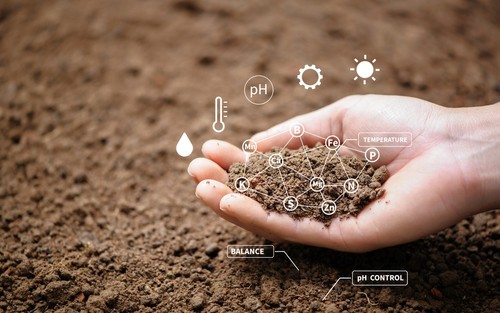
Soil composition also plays a crucial role in the health of bottle brush plants. The type of soil in which the plant is grown can affect the availability of nutrients, water, and oxygen to the roots.
Bottle brush plants can grow in a variety of soil types, including clay, peat, and sand. However, each soil type has its own unique characteristics that can affect the plant’s growth and health.
For example, clay soil tends to be heavy and poorly drained, which can lead to waterlogging and root rot. On the other hand, sandy soil is well-draining but low in nutrients, which can lead to nutrient deficiencies.
To ensure that bottle brush plants receive the nutrients they need, it is important to amend the soil with organic matter, such as compost, to improve soil structure and fertility. Additionally, compacted soil can limit root growth and nutrient uptake, so it is important to ensure that the soil is well-aerated.
Iron chelate can also be used to treat iron deficiency in bottle brush plants. This nutrient supplement is readily available and can be added to the soil to provide the plant with the iron it needs to produce chlorophyll and maintain healthy green leaves.
Attracting Wildlife with Bottle Brush
Bottle brush plants are a great addition to any garden for those looking to attract wildlife. The bright red flowers of the bottle brush plant are known to attract hummingbirds, butterflies, and bees. These animals are attracted to the nectar produced by the plant’s flowers.
Hummingbirds are particularly attracted to the bottle brush plant due to their long, thin beaks. They are able to easily access the nectar inside the flowers. Butterflies are also attracted to the bottle brush plant, especially during the warmer months.
Bees are also frequent visitors to the bottle brush plant, as they are attracted to the nectar and pollen produced by the plant’s flowers.
In order to attract these animals to your garden, it is important to plant the bottle brush plant in an area that receives plenty of sunlight. The plant needs to be exposed to full sun for at least six hours a day to keep up its vibrant red flowers. It is also important to keep the plant away from larger plants that may overshadow it.
Bottle brush plants can grow up to 25 feet in height and are often sold as shrubs. They are relatively easy to care for and require little maintenance. However, it is important to keep an eye out for any signs of disease or pest infestations that may cause the leaves to turn yellow or brown.
Overall, the bottle brush plant is a great addition to any garden for those looking to attract wildlife, especially hummingbirds, butterflies, and bees. With proper care and maintenance, the plant will continue to produce vibrant red flowers that are sure to attract these animals for years to come.
Conclusion
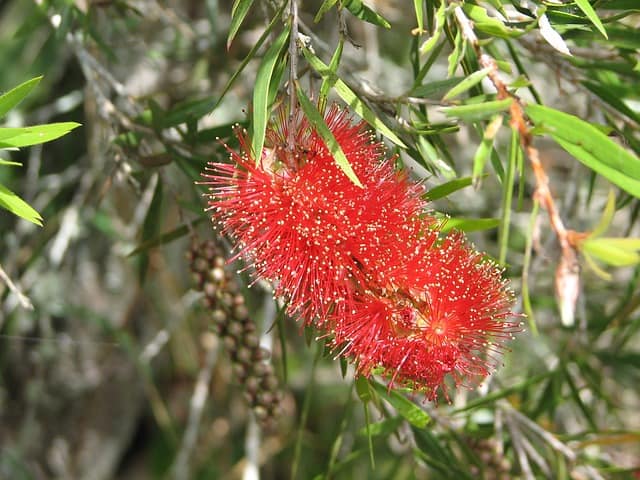
When the leaves of a bottle brush plant start turning yellow, it can be a sign of a few different issues. Proper diagnosis of the problem is key to treating the plant and preventing further damage.
One common cause of yellowing leaves is a lack of nutrients. Bottle brush plants require regular fertilization to maintain their health and vitality. A deficiency in nitrogen, magnesium, or iron can cause the leaves to turn yellow. If this is the case, the plant should be fertilized with a balanced fertilizer that contains these nutrients.
Another possible cause of yellowing leaves is pests or disease. Spider mites, mealybugs, and scale insects can all cause yellow spots on the leaves of a bottle brush plant.
If pests are present, they should be treated with an appropriate insecticide. If disease is suspected, the plant should be inspected by a professional to determine the best course of action.
Overwatering can also cause yellowing leaves. Bottle brush plants prefer well-draining soil, and standing water can lead to root rot and other issues. If the soil is too wet, the plant should be allowed to dry out before watering again.
In conclusion, yellowing leaves on a bottle brush plant can be caused by a variety of factors. By diagnosing the problem and taking appropriate action, the plant can be saved and restored to its full health and beauty. Regular maintenance, including fertilization and proper watering, can help prevent future problems from occurring.
Frequently Asked Questions
Why are the leaves on my bottlebrush buckeye turning yellow?
Yellowing leaves on a bottlebrush plant can be a sign of various issues. One of the most common reasons for yellowing leaves is a lack of nutrients.
This can happen when the plant is not getting enough water or when the soil is too compacted. Another reason could be due to a pest infestation, such as armored scales, which feed on sap and cause yellowing of the foliage. Overwatering can also lead to yellowing leaves.
What is lacking when leaves turn yellow?
When leaves turn yellow, it is usually a sign that the plant is lacking in essential nutrients such as nitrogen, iron, or magnesium. A lack of these nutrients can cause leaves to turn yellow and eventually die.
Soil that is too acidic or alkaline can also cause nutrient deficiencies, leading to yellowing leaves.
How do you take care of a yellow bottle brush plant?
Taking care of a yellow bottle brush plant involves first identifying the cause of the yellowing leaves. If the issue is due to a lack of nutrients, the plant may need to be fertilized with a balanced fertilizer.
If the soil is too compacted, it may need to be aerated or loosened. If the plant is suffering from a pest infestation, it may need to be treated with an insecticide. Overwatering can be addressed by allowing the soil to dry out between watering sessions.
How often should I water bottle brush?
Bottle brush plants prefer moist soil but do not like to be overwatered. It is important to allow the soil to dry out slightly between watering sessions to prevent root rot.
The frequency of watering will depend on the climate and the type of soil. In general, it is recommended to water bottle brush plants once a week during the growing season and less frequently during the dormant season.
Bottle brush leaves turning yellow and brown
Yellow and brown leaves on a bottle brush plant can be a sign of a serious issue such as root rot or verticillium wilt. These diseases are caused by excessive moisture in the soil and can cause the plant to wither and die.
If the issue is not addressed promptly, it can spread to other plants in the area. It is important to identify the issue and take steps to address it as soon as possible.
Bottle brush leaves drying out
Drying out of leaves on a bottle brush plant can be a sign of underwatering. This can cause leaves to become brittle and eventually fall off. It is important to water the plant regularly and ensure that the soil is moist but not waterlogged.
In some cases, drying out of leaves can also be due to a lack of humidity in the air, so misting the plant can help keep the leaves hydrated.

Hey, I’m Lisa and I’ve been an avid gardener for over 30 years. I love writing, talking and living in the garden! Feel free to connect with me on my socials below

